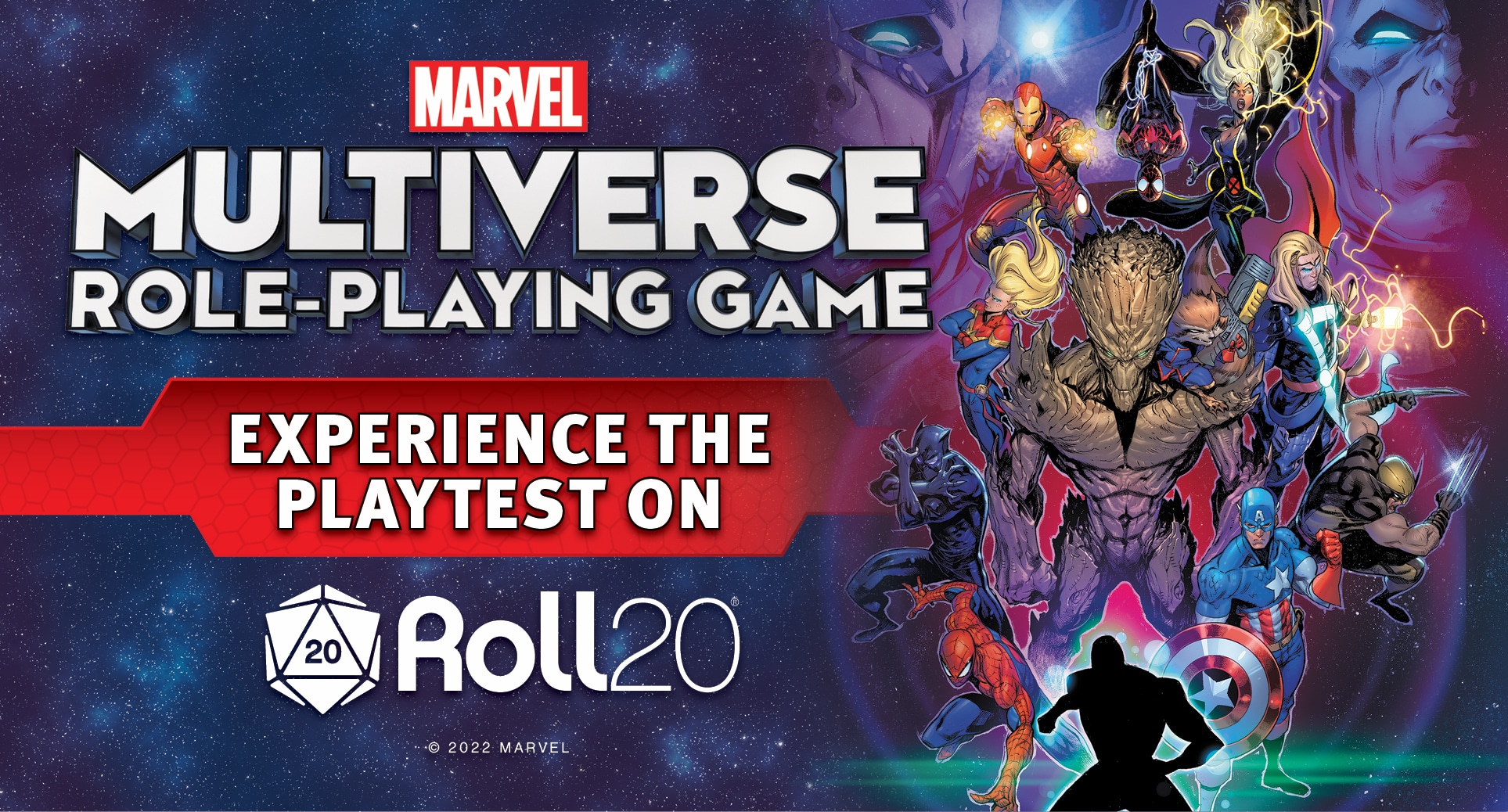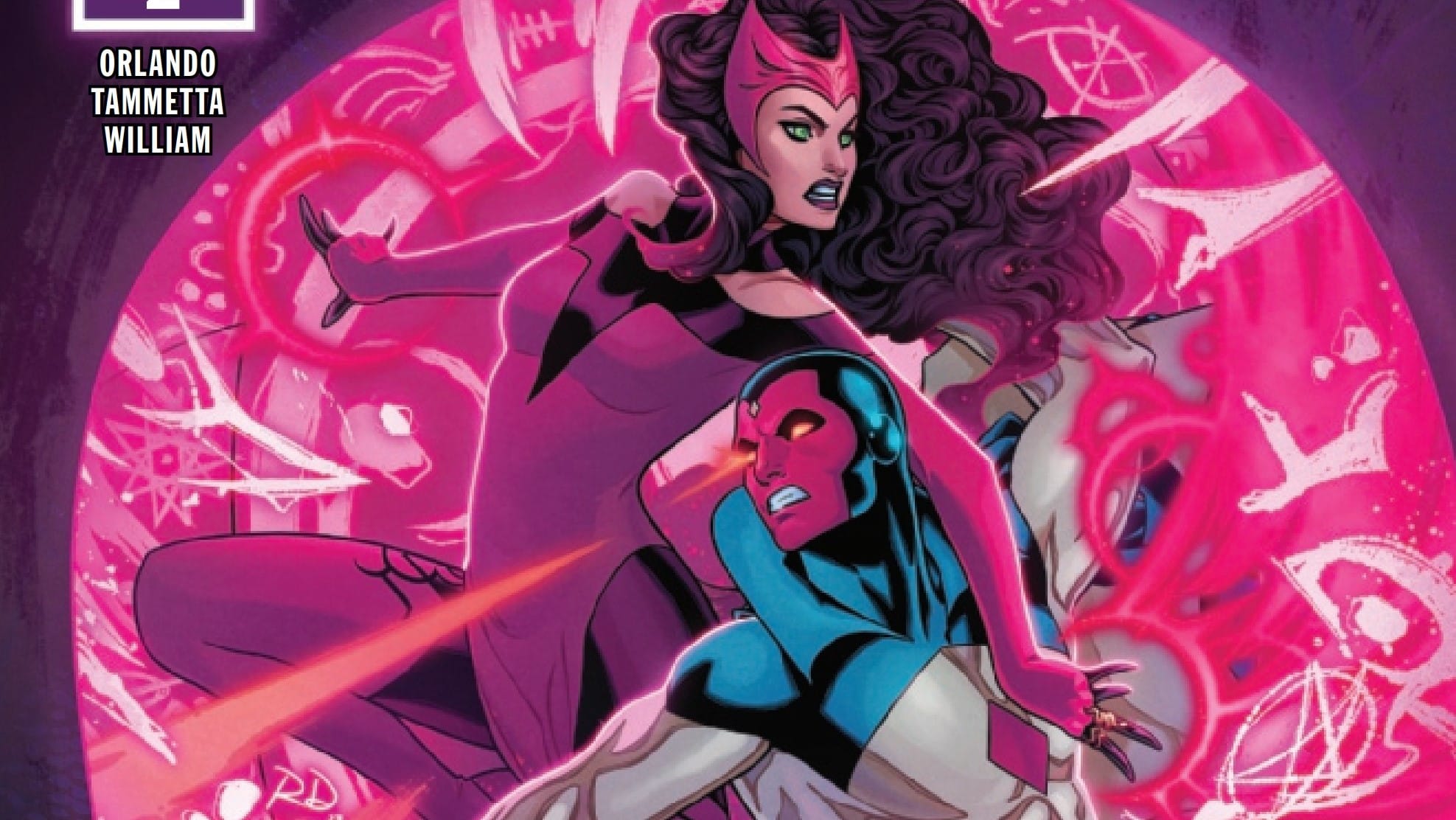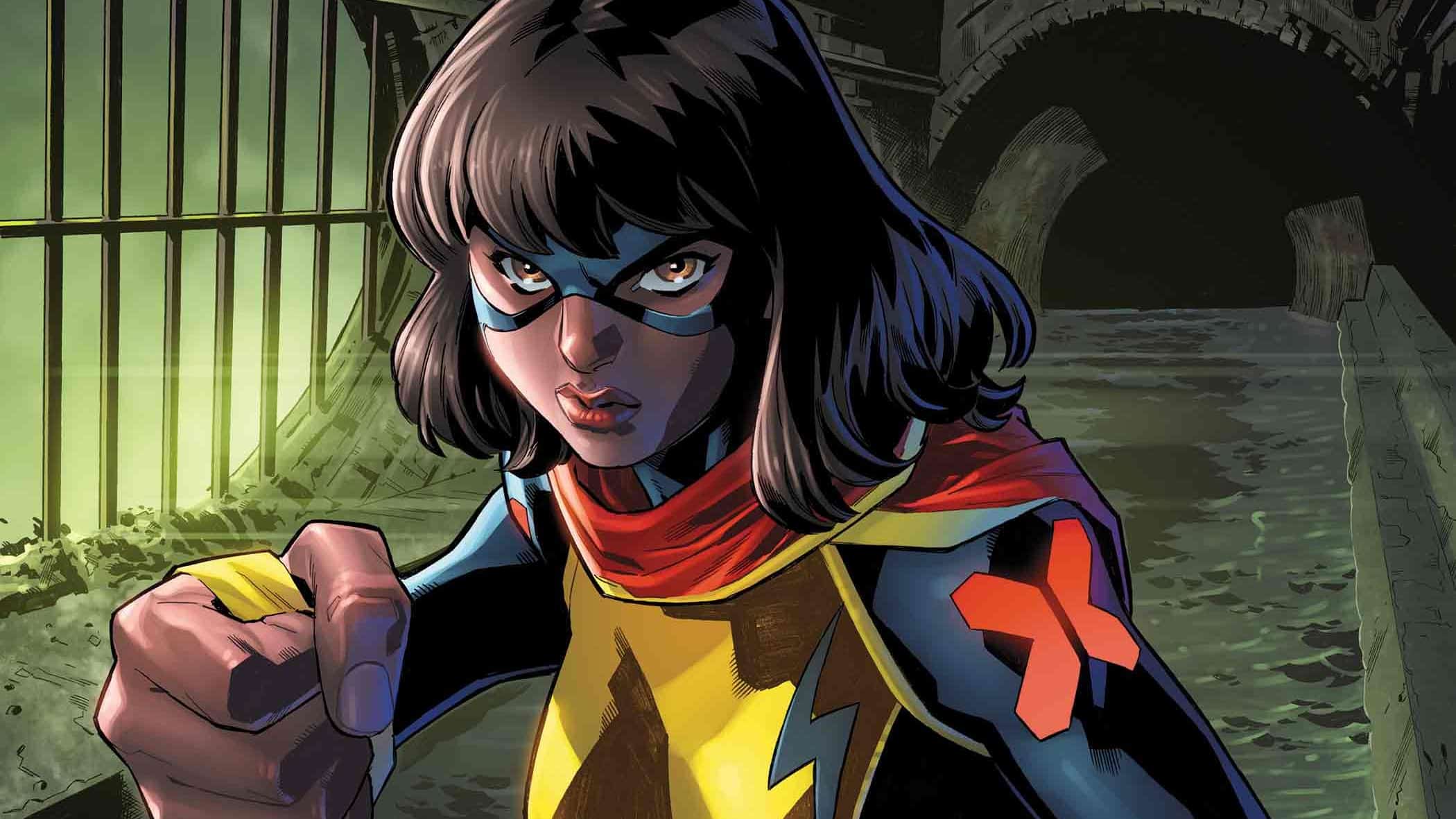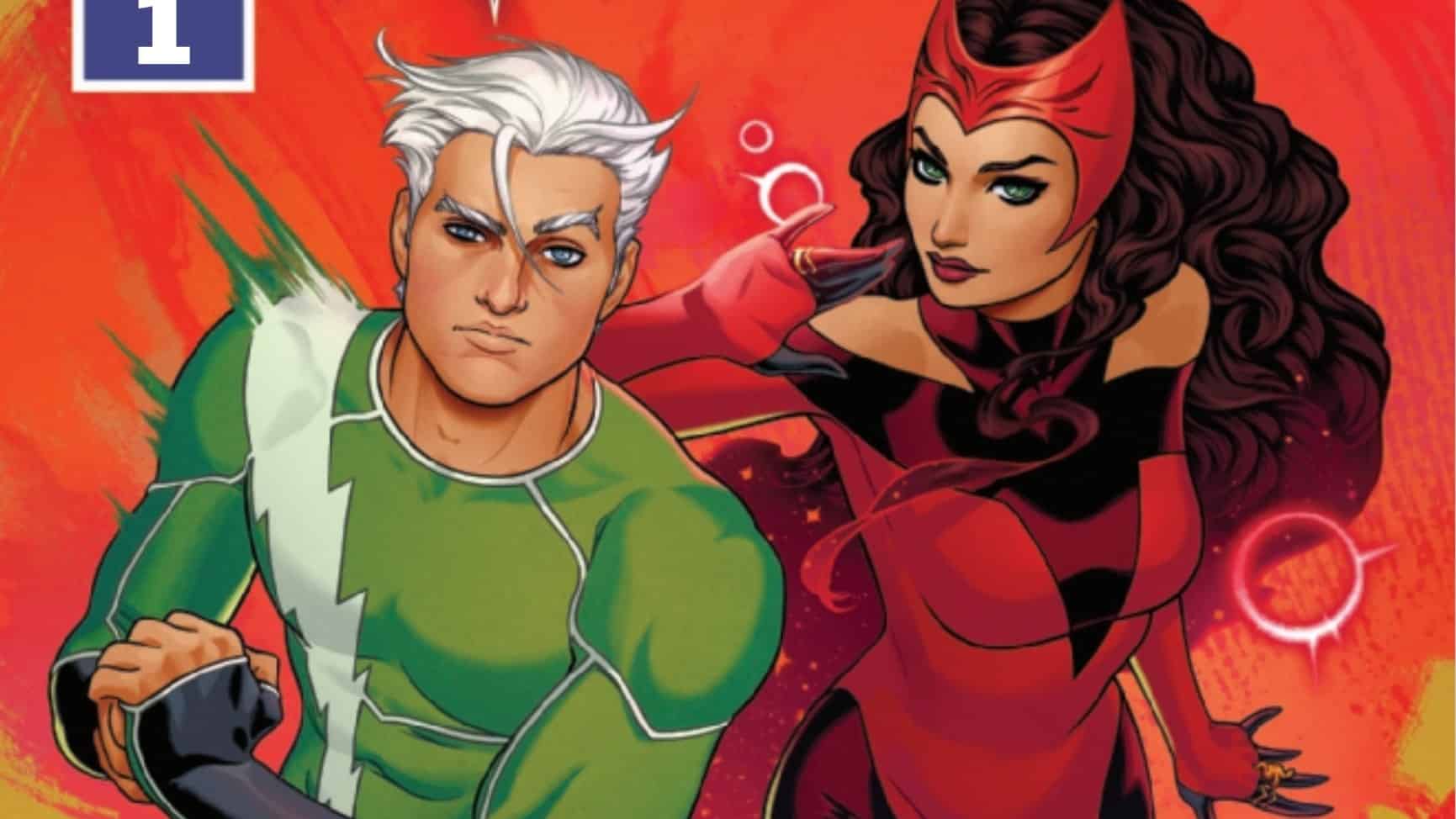Not five minutes into reading the rules for The Marvel Multiverse Roleplaying Game playtest did I learn that when you roll a 1 on the special Marvel die, it actually counts as a 6 — unless, that is, you roll a 1 on the other two dice as well. This is all part of the Marvel d616 ruleset, one that allows a player to feel like they’ve achieved the impossible when they roll a 6-1-6. As far as I’m concerned, though, if you have a die face that’s sometimes a 6, and sometimes a 1, that’s bad game design, and that’s only the start of what makes this brand-centric RPG system such a mess.
If you’re new to tabletop roleplaying games (TTRPGs), this system may not be for you. If you’re a deft hand at them…well, you might just be better off homebrewing some Marvel superheroes into whatever system you’re most familiar with. While it’s worth noting that this is just the playtest, and not the final version, it’s hard to see how they’d make the game better without a complete overhaul.
That being said, there are a few things that can make this game worth your while, if you’re really willing to put in the effort. I ran a custom game with the playtest with the ComicsXF staff to recreate 1963’s X-Men #1, so here’s all you need to know if you want to make the most out of Marvel’s newest TTRPG.
Charts, Guesswork, and Exhausting Math
It’s worth mentioning my background with superhero TTRPGs. For many people, the gold standard is Magpie Games’ Masks: The Next Generation, a game I was fortunate to be able to run with a group of my friends for a number of years. Masks is a relatively simple game that does a remarkable job of boiling down the narrative elements of superhero stories down to their basics. The focus is more on building a satisfying superhero story, and all the complicated emotions that come with, and less about the nitty gritty statistics of who’d win in a fight.
The other game I’ve played and loved is Monte Cook Games’ Cypher System. The Cypher System leans a lot more into numbers, giving everything – from an opponent to a wall to a complicated device – a level, the number you’d need to overcome it as an obstacle. While there’s a lot of complicatedness to the system as a whole, simplicity is at the heart of it, which allows for a great deal of customization and general messing about. I was able to cobble together a game set on Krakoa last year starring Eye-Boy, Cable and Sunfire with relatively little fuss.
Which brings us to The Marvel Multiverse Roleplaying Game and its accursed d616 system.

Now, I could have gone the easy route with this. The RPG comes with its own inclusive scenario where you get a team of pre-made Avenger character sheets, and battle through Hydra goons. The Roll20 package for this game even includes tokens, character sheets, rules help: in short, everything you need to just start playing.
I, however, did not take the easy route, and decided instead to build up my characters from scratch, and this is where my frustration with the game comes in, because character creation as it stands is pretty danged challenging — and Roll20’s character sheets do not help one bit.
The first thing you have to do is figure out your rank. Rank 1, you’re basically Paste Pot Pete — your stats are weak, you can be taken out by a sneeze, and there isn’t a whole lot you can do. Rank 25, and you’re at the top of your game. You’re not just taking on gods and winning, you’re one good storyline away from being one of the fundamental cosmic forces of the MCU itself. It’s fairly standard character progression if you compare it to something like, say, D&D, and if you were creating an adventuring party from the start, it’s great.
If you want to create your favorite Marvel characters, though, you’re going to have to do a lot of guesswork. I made my O5 X-Men Rank 5, considering they were teens just getting used to their abilities, though I was going by experience, not the strength of their powers. Within the fiction, a blast from Cyclops should be able to do some serious damage to Spider-man even at the height of Spider-Man’s prowess, but as the stats stand, it would barely faze him even if Cyclops could make the hit.
Because here’s the thing: the numbers can vary wildly from rank to rank. In D&D — the heaviest numbers system I’ve played — even at the height of your powers, it’s rare if you’re adding more than a 15 to your dice roll. A Level 1 character could, theoretically, hurt a Level 20 player, even beat them in battle. A Rank 5 character cannot even hit a Rank 10 character, no matter how high their roll, not without some serious skewing of stats.
All this is a part of what makes character creation so exhausting. To figure out your basic stats, you have to follow a chart that shows you how many points you get to allot per rank, to spread out amongst your six abilities (the stats have been renamed so to make a M.A.R.V.E.L. acronym, to the benefit of nothing but branding). Ordinarily, the max a stat can be is a +4…buuuut you also need to look at the chart that determines your character’s archetype (think of it like your character’s class, or their function in battle), which can let you increase the caps of your stats. You also need to look at your power sets, which can also increase those caps, but to determine how many power sets you have, that’s right, it’s another chart.

In short, you’re looking at about 5 charts just to figure out your characters basic statistics, and none of this is easily laid out in the book — I had to screenshot charts and put them in a separate folder just to keep track of it all, as well as making charts of my own just to figure out how many points I could give a character.
Once that’s done, it’s back to the archetype chart, because there’s some additional multiplication and addition you need to do to fill out all your other character statistics. All this to say that this is the most exhausting character creation process I’ve ever gone through — and there’s no simple method in place for leveling up a character within the game, it’s nearly as much work as making a new character from scratch.
I should note here that Roll20 does very little to help you out with character creation — it does some of the basic math, and helps you out with the roles, but you still have to do a fair amount of chart referencing on your own to be able to fill things out to begin with. I’ve gotten used to Roll20’s drag-and-drop abilities from the compendium, but for the Marvel RPG, you’ve got a lot of copy/pasting ahead of you.
So when it came to figuring out Magneto’s rank, I discovered just how much of a pain it was figuring out how to balance things.
D&D has challenge ratings. The Cypher System has levels. Masks has Conditions — almost every system I know has a way of helping GMs figure out how to find the balance between challenging their players and overwhelming them entirely. The Marvel Multiverse RPG doesn’t have any kind of system in place for enemies, creatures, or NPCs, meaning any enemies in the game need a whole character sheet for themselves, which, as I’ve described, is a lot of work. I realized that even in a five-on-one battle, my original plan of a Rank 10 Magneto would be impossible for my players to defeat, so I settled on a Rank 7, which really just was my best guess — it was too much work to figure out what rank would work best.
The Drawbacks of Specificity
I also ran into a bit of trouble when it came to giving my characters their abilities. The powers mentioned in the game are more or less built for the characters included in the pre-made scenario. While Energy Manipulation Powers and Tactical Mastery were an easy fit for Cyclops, you have to put a fair amount of creativity in to account for other powers — my Iceman leaned a lot on the Shieldbearer powerset, and Magneto on the Firearms powerset. Magneto might not use guns, but he throws about a lot of shrapnel — close enough, really. I had to give Angel Flight, which broke the rules a bit, because it’s a Rank 10 ability, and Angel’s only Rank 5, but a character like Angel should be able to fly no matter how low his rank.

Now, the book said that more powers would be included in the completed book, so I’m not judging this book too harshly for lacking powers. My main criticism is that I think the Marvel RPG is taking entirely the wrong approach to this — making specific descriptions for very specific powers. When you think of the wide range of powers available in the Marvel Universe, it’s nearly impossible to account for every one of them. A good system should describe powersets vaguely. The more vague a description is, the more flexible it is, and the easier it is for a player to create the kind of character they want to — which is the point of creating a brand-heavy system, after all.
The specificity of things trying to cover every possible scenario is a running theme of the book. Pages unnecessarily cluttered with specific rules for throwing objects, for running through walls, for falling and flying and ramming into someone at great speeds. I appreciate that I know the exact numbers I need to simulate breaking through a wall, but really, any decent Games Master should be able to come up with an off the cuff challenge rating for that, but given the weirdnesses of ranks, figuring out challenge ratings is the biggest challenge of all in this game.
After spending a few hours working on the six character sheets I would need to set the X-Men up against Magneto, though, I did come to a certain appreciation for these stats. There’s fun in figuring out how intelligent Beast would be as compared to Cyclops, to comparing Angel’s agility to his ego, to making Iceman a doofus with high resiliency. I could see myself enjoying an afternoon arguing with someone else familiar with the system how high Magneto’s ego should be, and it made me realize that where this system would work best is less as a game, and more as new way to rank characters in a new Marvel Encyclopedia for people who like knowing their heroes exact power ratings. These numbers would also work great in a video game, where the math can be invisible and you can just get to the fun. As an RPG, though, your GM has an exhausting amount of work ahead of them.
As for the player experience, though, well — let’s talk to one of my players to get her opinion on the matter.
The Game Itself
Armaan Babu: Nola, hi! Welcome. Why don’t you tell us a bit about where you’re coming from in terms of playing TTRPGs, and who you played in the game here?
Nola Pfau: Hi Armaan! For this game, I opted for Angel. I’m on record in multiple places as being a Cyclops fan, but I couldn’t pass up the opportunity to play Angel in his earliest, himbo-est incarnation.

Experience-wise, I’ve been playing TTRPGs for nearly…thirty years at this point? Whew. I found a D&D Greyhawk set in a thrift shop in the mid 90s and it was all over from there. So I’ve played a lot of systems with a lot of different complexity levels.
Armaan: And now that you’ve played this one – what do you think? I do remember your very first reaction was to message me saying, “Armaan this system is RIDICULOUS.” Care to elaborate?
Nola: Look, the “d616” system is absurdly complicated. Requiring players to keep track of so many conditional results on the result of a single d6 roll is going to stop anyone trying to play this system before they even get started. Veteran players like us are annoyed by it, new players are just going to decide that maybe tabletop RPGs aren’t for them. I suspect even veteran players would think the same in an in-person setting; I think that Roll20 handling a lot of the math of it got us through a few headaches.
Armaan: I will admit, I almost abandoned the Karma, Edge and Trouble system altogether, which allows players to reroll their rolls — not all three dice, but pick one of them. Edges and Trouble cancel each other out, Karma gives you one of either, and if it weren’t for the fact that so many abilities depend on all three of them, I’d have just skipped it.
Roll20 handling the math of the rolls did help. It also helped that X-Men #1 begins with a Danger Room scene, that allowed me to put in a tutorial to get everyone used to the game’s aspects bit by bit.
I gotta say, though, once the finicky part of the rules was gotten past and we got into actual gameplay…it didn’t feel like Marvel’s RPG offered anything new to the experience. The gameplay was pretty by the numbers, as complicated as those numbers might have been.

Nola: Yeah, it was a lot of very complicated math that synthesized down to simplistic results: either your score is higher than the opponent’s, or it’s not. The dice system feels like it wants to be a narrative one, like Fantasy Flight’s Genesys or the Fudge dice favored by the Fate games. But because it can’t let go of the number-crunching, it just gets dragged back into that literalism of a pass/fail roll.
I did like the way that, rather than a list of basic skills a la D&D, deciding what to roll for attempted actions just refers back to the basic stats, but I agree that nothing here is really additive—even the power trees just remind me of, say, Edge of the Empire. Actually, on that note, given that Disney owns Star Wars, why not farm out a Marvel TTRPG development to the same company that does EotE?
Armaan: I haven’t played EotE, but I do wish they had farmed it out to a company with proven RPGs. This game is filled to the brim with technical applications for a character, but very little imagination.
Honestly, the system is missing something pretty basic that I’m surprised is overlooked: something to motivate the player to push on. Most games have experience systems for that, some have additional personal quest tracks for a character, milestone achievements, and things like that. The Marvel RPG has no experience system, you have to just hope that the players want to defeat the bad guy instead of spending an entire four sessions making friends with Bernard, the beat poet, an NPC that the GM absolutely did not prepare for.
Knowing players, they’re going to choose a silly but entertaining option over the main quest every time — just asked the number of people who’ve put in dozens of hours into Skyrim but still haven’t finished the main game.
I one thing I did enjoy that we lucked out on — rolling a 1 on the special Marvel die turns a roll into a “fantastic” roll, offering a little extra bonus for those who’ve made those rolls. Rolling the patented 616 on those dice, however — that’s an Ultimate Fantastic Roll, and the book tells you that that’s just the supremest bestest awesomest roll one could make, leaving mere Natural 20s in the dust. And our game just happened to have one of those — Iceman made the final 616 roll that defeated Magneto, and it was a hell of a way to end the game.

All in all, though, do you think this is a system worth playing, or should GMs just homebrew something Marvel-style into systems they already play? More importantly — do you think there’s anything that this playtest system can improve to make it worth picking up?
Nola: I think, like you mentioned, it needs a level track, a way to improve. That’s not just a classic motivation for tabletop RPGs, it’s an element of superhero stories themselves! Look at Jean Grey’s progression from telekinetic, to telepath, to cosmic avatar. Look at Iceman going from throwing snowballs to crafting fully-autonomic ice golems! The progression is part of the story, and its lack here feels like a huge failure.
I also think it needs to decide whether it wants to be a number-crunching system or a narrative one (frankly, I think the latter). I think that if you’re going to focus on the experience of playing superheroes, then you need to minimize the math of it, and give more room for interpretive results. One of the highlights of the EotE system is that it uses dice with symbols:
There’s a little bit of a learning curve to these dice, but once you’ve played a couple rounds with them, it’s pretty easy to work out: your basic results are success or failure, and then an upgraded version of each. You roll a handful of dice (the good ones here are the green, yellow, and blue, the bad are the purple, red, and black), and the resulting symbols cancel each other out. Whatever you’re left with is a more abstract result; either you’re very successful, somewhat successful, or so on. Because of this rejection of numbers-based thinking, you’re able to look at the dice results in a more “okay, what does this mean for what I’m trying to do” mindset, which gets those creative, descriptive juices flowing. I legitimately think Marvel needs something like this in an RPG; I think an overreliance on arbitrarily-scaled numbers seriously works to the system’s detriment.

On the subject of power trees – I like the concept! But just like the way the game makes room for characters with varied abilities (“Polymath” is the hero type, which is a term I find ill-fitting; call them a Generalist or a Jack of all Trades or something!), there needs to be a way to build those kinds of variations at a more granular level. Jean is a great example; you had to build her telekinesis powers by kind of borrowing from unrelated trees, like Weather Control. Sure, Weather Control versus Telekinesis is really just flavor in this context, but nonetheless it’s a strange bit of mental gymnastics for players to have to do that kind of cobbling. Like you said, more power trees are planned, so…great? But I hope also that those power sets have a little more flexibility in their expression – I frankly don’t trust this system to survive long enough for additional supplements down the line.
Armaan: I think of Masks, which I’ve mentioned earlier, and a game that borrows heavily from it: Avatar Legends. Both games are set in a world with a wide variety of superpowers, where superpowers are in fact what define those worlds to a large extent. Instead of a deep dive into specific powers, though, those games simplified it with a move that more or less translates to “using your powers.” No need to have like, eight separate sections to track what powers you can use, you just have something that allows you to use your powers — any other abilities just allow you to boost or change what stat those powers are based on.
Avatar Legends even lets you have the best of both worlds, with characters able to study for, train and learn certain techniques — and that’s a narrative strength of the game, themes of learning and growth are baked into the storytelling of that universe.
I’m trying to think of the Marvel equivalent, where powers are gained more chaotically. Difficult encounters that grant powers or power upgrades. Something like that. Either way though — flexibility is key to a good game. What the Marvel Multiverse RPG forces you to do is either trust that your GM is going to put in a lot of creative workarounds on their own, or rely on whatever supplements it might come out with. That’s great for Marvel’s bottom line — which is what this brand-focused RPG seems to be all about — but no fun at all for players.







